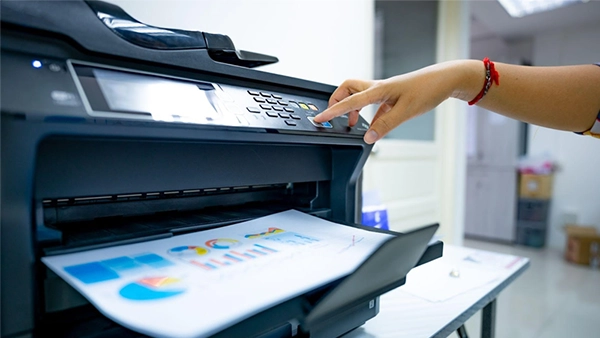
Selecting the best file format for printing is crucial to ensure the final output complies with expected quality standards. There are dozens of file types to choose from, and they all serve different purposes, which can dramatically affect the color fidelity, detail, and clarity of printed materials. Whether you are going to print family photos or a new company logo, understanding the strengths, limitations, and use cases of each format is key to achieving high-quality results. So, what file type is best for printing? Let’s sort things out and explore how you can switch formats within seconds.
Looking for the best image format for printing? Or perhaps you are dealing with complex office documents containing lots of text, graphs, and tables? The following highlights will help you choose the most suitable format for superior printing quality:
| Format | Strengthens | Limitations | Best Use Cases |
| JPEG | ☑Smaller file size makes it ideal for storing and sharing files ☑Compatible with almost all editing applications ☑Adjustable level of compression | ☒Lossy compression discards some image data, reducing the quality of outputs ☒Does not support transparency ☒Color depth is restricted to 8 bit | ◆Web printing ◆Photos and images ◆Artwork |
| PNG | ☑Uses lossless compression, so image data is preserved ☑Supports transparency ☑ Easy to edit on different devices | ☒Bigger file size ☒Does not support CMYK colors ☒Ideal only for web graphics | ◆Webicons ◆Logos ◆Graphics |
| TIFF | ☑High-quality outputs due to lossless compression ☑Supports both RGB and CMYK colors ☑Supports transparency | ☒Large file size ☒Difficult to edit ☒May be incompatible with some printers | ◆Professional photos ◆Colorful illustrations Graphics ◆Large-scale printing (billboards, banners, posters, etc.) ◆Advertising materials |
| ☑Maintains original formatting, fonts, and layout of a file ☑Supports both RGB and CMYK colors ☑Compatible with all operating systems and printers | ☒Requires dedicated editing tools for seamless file modifications ☒Uncompressed files may be large | ◆Documents ◆Books and magazines ◆Promotional items (flyers, banners, etc.) | |
| SVG | ☑Uses lossless compression and can be resized seamlessly ☑Supports transparency ☑Have smaller file size | ☒Are not suitable for detailed photos ☒May be incompatible with some printers | ◆Web graphics (illustrations, logos, charts, icons, interface elements) |
Converting PDF to SVG, PNG, JPEG, or TIFF and vice versa is not uncommon, considering the diversity of printing needs these formats meet. Fortunately, the process is easy, and you can switch from one file type to another without downloading any complex software on your device. With specialized online tools like PDF Guru, it’s possible to change formats immediately, whether you are seeking an accurate PDF to SVG converter or want to switch to any other file type that fits your printing needs.
Online converters are user-friendly, which makes them convenient even for non-tech-savvy users. These platforms are also accessible through multiple devices, so you will manage to change formats using any tablet or phone you have at hand. Here are the steps to complete:
Defining which file format is best for printing is insufficient to ensure the top-quality final output. To get the most out of it, you should prepare your files beforehand, so keep these tips in mind:
Summing up all of the above, there’s no clear answer to the question “What is the best file format for printing?” as each of them has its strengths and use cases. If high-resolution pictures are a priority, TIFF is the best option. JPEG, PNG, and SVG are useful for web graphics, while PDF is the top choice for documents with complex layouts and detailed illustrations. Consider the peculiarities of each format to find the best fit for your printing needs.
